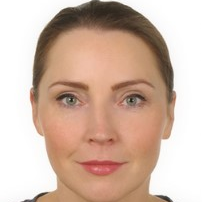Design Optimization of Antennas
A special issue of Applied Sciences (ISSN 2076-3417). This special issue belongs to the section "Electrical, Electronics and Communications Engineering".
Deadline for manuscript submissions: closed (25 February 2022) | Viewed by 18948
Special Issue Editors
Interests: antenna design; surrogate modeling; em-driven design; multiobjective optimization; simulation-driven design; surrogate-based optimization; design optimization; computer-aided design; filtry gm-c; space mapping
Special Issues, Collections and Topics in MDPI journals
Special Issue Information
Dear Colleagues,
To meet the needs of emerging application areas such as 5G wireless communications, the Internet of Things (IoT), medical imaging, remote sensing, space communications, or wearable/implantable devices, contemporary antenna systems have reached a high level of sophistication. The design of complex structures involves the adjustment of antenna topology but also meticulous tuning of geometry and material parameters. Practical realization of these tasks necessarily involves numerical optimization procedures, yet it is a challenging endeavor, partly due to the high CPU cost entailed by massive electromagnetic (EM) simulations (otherwise necessary to ensure reliability), but also resulting from the necessity of handing multiple performance figures and constraints.
Over the recent years, considerable research efforts have been directed toward the development of techniques that alleviate the difficulties pertinent to EM-driven antenna optimization, both in the context of computational efficiency and reliability. Apart from improvements concerning conventional methods, a number of algorithmic tools and concepts have been incorporated into antenna design frameworks, including adjoint sensitivities, topology optimization, surrogate modeling, and machine learning approaches, to mention a few.
In this Special Issue, we invite the scientific community to publish works highlighting recent advancements in simulation-based optimization of antenna systems.
The topics of interest include but are not limited to:
- Simulation-driven antenna optimization;
- Optimization using adjoint sensitivities;
- Variable-fidelity antenna optimization;
- Physics-based and data-driven modeling for antenna design;
- Multiobjective design methods;
- Global optimization methods;
- Nature-inspired antenna optimization techniques;
- Surrogate-assisted antenna optimization;
- Inverse modeling techniques for antenna design;
- Uncertainty quantification of antenna structures;
- Yield-driven design;
- Neural network approaches;
- Space-mapping-based techniques;
- Optimization-based pattern synthesis of antenna arrays;
- Optimization of frequency selective surfaces;
Prof. Dr. Sławomir Kozieł
Dr. Anna Pietrenko-Dabrowska
Guest Editors
Manuscript Submission Information
Manuscripts should be submitted online at www.mdpi.com by registering and logging in to this website. Once you are registered, click here to go to the submission form. Manuscripts can be submitted until the deadline. All submissions that pass pre-check are peer-reviewed. Accepted papers will be published continuously in the journal (as soon as accepted) and will be listed together on the special issue website. Research articles, review articles as well as short communications are invited. For planned papers, a title and short abstract (about 100 words) can be sent to the Editorial Office for announcement on this website.
Submitted manuscripts should not have been published previously, nor be under consideration for publication elsewhere (except conference proceedings papers). All manuscripts are thoroughly refereed through a single-blind peer-review process. A guide for authors and other relevant information for submission of manuscripts is available on the Instructions for Authors page. Applied Sciences is an international peer-reviewed open access semimonthly journal published by MDPI.
Please visit the Instructions for Authors page before submitting a manuscript. The Article Processing Charge (APC) for publication in this open access journal is 2400 CHF (Swiss Francs). Submitted papers should be well formatted and use good English. Authors may use MDPI's English editing service prior to publication or during author revisions.
Keywords
- Simulation-driven antenna optimization
- Optimization using adjoint sensitivities
- Variable-fidelity antenna optimization
- Physics-based and data-driven modeling for antenna design
- Multiobjective design methods
- Global optimization methods
- Nature-inspired antenna optimization techniques
- Surrogate-assisted antenna optimization
- Inverse modeling techniques for antenna design
- Uncertainty quantification of antenna structures
- Yield-driven design
- Neural network approaches
- Space-mapping-based techniques
- Optimization-based pattern synthesis of antenna arrays
- Optimization of frequency selective surfaces
Benefits of Publishing in a Special Issue
- Ease of navigation: Grouping papers by topic helps scholars navigate broad scope journals more efficiently.
- Greater discoverability: Special Issues support the reach and impact of scientific research. Articles in Special Issues are more discoverable and cited more frequently.
- Expansion of research network: Special Issues facilitate connections among authors, fostering scientific collaborations.
- External promotion: Articles in Special Issues are often promoted through the journal's social media, increasing their visibility.
- e-Book format: Special Issues with more than 10 articles can be published as dedicated e-books, ensuring wide and rapid dissemination.
Further information on MDPI's Special Issue polices can be found here.






